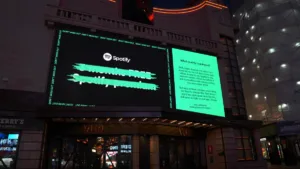By Simon Levitt, Global Creative Technology Director, Imagination
In general, articles discussing 5G come in two types: the first are trend-led pieces waxing lyrical about how 5G will change the world overnight; the second err on the side of caution, urging brands to ‘walk’ before they ‘run’ when integrating 5G into their experiences. Sometimes, the latter, stretch the metaphor even further to the ‘hurdles’ they’ll need to overcome.
Both have merit – and are indeed correct – but do little to help brands incorporate 5G into their strategies.
The problem centres on how 5G is discussed – the opportunities and challenges are often without context and there is an inherent issue with the language used (5G implies a technology that is just one better than 4G). Furthermore, people associate 5G with their phones, but 5G can be 100 times faster than 4G and it will not only be connected to phones, but also to vehicles, cities and even toothbrushes!
- Understanding the benefits
One of the biggest challenges we have is helping brands understand the potential of 5G. It is not only about faster downloads but about latency – the speed at which the data travels between two points. 5G can have the same latency as a human’s reaction time, its data can travel between two points as fast as a human can react to that change.
For example, 5G can give you the opportunity to virtually control cameras in real-time at sporting events, and create games in VR with participants in different continents playing in a virtual environment with no perceptible lag.
With this instantaneous connection, the key for creative agencies is to help brands understand the benefits of this technology and conceive the new possibilities it enables in experiences. AT&T, for example, has trialled an augmented reality 5G experience at the Dallas Cowboys stadium where fans, by using their 5G-enabled phones, can see 80ft football players beamed onto the field alongside real-time game statistics.
- The infrastructure is still being built
Another concern is that the 5G infrastructure isn’t ubiquitous across all networks. Sure, you might get a 5G connection in one location but not in all locations. Additionally, not all customers have 5G-enabled phones – so how can brands build ideas and consistent experiences for all their customers? One approach is to create contained, sandboxed 5G experiences.
Creating a sandbox means we don’t have to rely on customers having the latest 5G-enabled phones, or for the 5G network to extend across a country, but we can still build real-time demonstrations of its capabilities in a controlled environment.
Working with Vodafone for example we created the world’s first haptic rugby tackle to demonstrate the 5G network, showing its super-low latency and ability to transmit a lot of data with no time lag. To do this, one rugby player tackled a cylinder containing sensors, 100 miles away another player, wearing a Tesla Haptic suit, felt that tackle’s impact in real-time.
- Cost of implementation
Cost and speed of implementation is another key consideration, and brands will invariably need the help of specialists to execute experiences. We were lucky to be working with Vodafone in the previous example alongside its team of engineers and 5G experts.
Greensill, a working capital finance provider, estimates the total rollout cost of 5G across the supply chain to be $2.7 trillion by the end of 2020. Freddy Boom, Greensill Chief Country Officer, Americas, said: “We expect that this will continue to rise as consumer demand for connected devices grows.” Cost consideration isn’t only about infrastructure but the devices that need to connect to it.
- Data security
The media has been full of news articles about data security and the United States government’s concerns with using Huawei for its 5G infrastructure. Fortunately, spying isn’t a huge issue with our clients, but the security of customers’ data rightly is.
The multitude of connected devices and personalisation leads to more customer data being processed by agencies. We are responsible for guiding the brands we work with to think customer-first; what the benefit is for them and how we can be transparent about the data we may collect.
- Health
None of our clients have expressed concerns about the health implications of 5G and rightly so, there is no scientific evidence for this. The International Commission on Non‐Ionizing Radiation Protection (ICNIRP) recently updated its guidelines after research into frequencies above 6Hz – this includes 5G – showing that its radio electromagnetic fields have an output level significantly lower than the recommended maximum to remain safe.
There have been concerns about new technologies since the days of Ancient Greece. Back then it was the ominous power of the written word, which Socrates and Plato believed would lead to poor forms of communication and knowledge. It was the same with the printing press, novels, manufacturing (let’s not forget the famous luddites) and even the microwave.
So maybe the ‘walking before you can run’ metaphor is the right one for now. Sandbox your experiences, take small steps to build, test and learn. Understand what it can do in the future for your experience while being realistic about what can be achieved. We always encourage our brands to push the boundaries.
And that 5G toothbrush – it coaches you on how best to brush your teeth – expect to see it in shops later this year.









